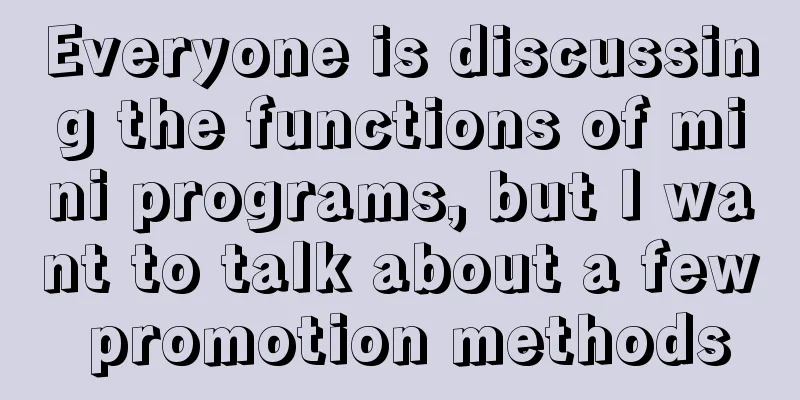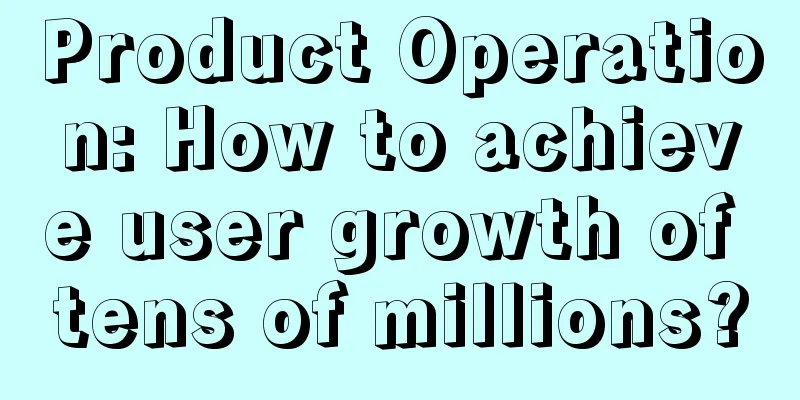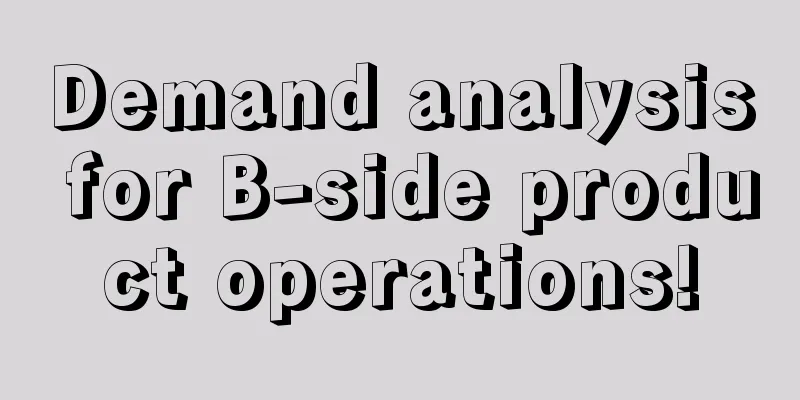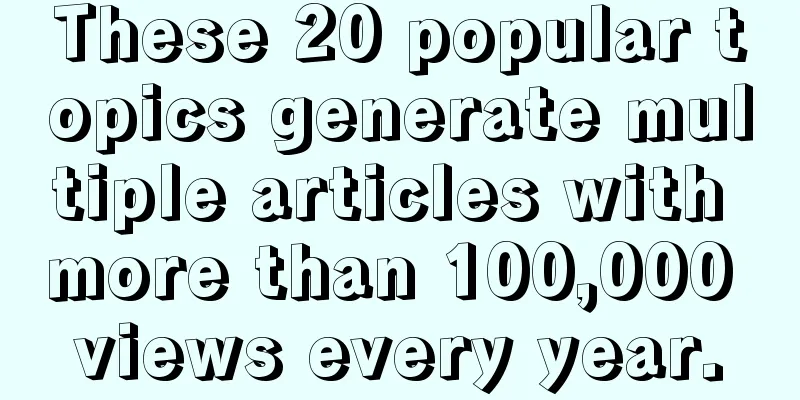The second half of Android developers
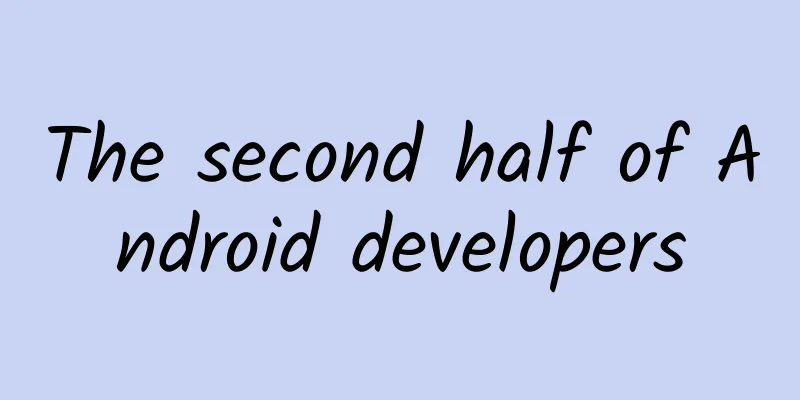
|
In 2018, the entire mobile Internet entered the second half. Why do we say that we have entered the second half? To talk about the future, we must first talk about history. Let's start from the beginning.
By this time, domestic Android development was already extremely popular. No matter if you had learned Java or had Android experience or not, as long as you were willing to engage in Android development, you could find a well-paid job; the entire industry was thriving. Any Internet company that did not develop two apps would be embarrassed to call itself an Internet company. Those that did channels and markets also made a lot of money, such as 91 and Wandoujia. The first batch of apps were also brewed. For example, the most installed apps on our mobile phones at that time were QQ, WeChat, 360 Assistant, Sogou Input Method, Baidu Maps, UC Browser, Tiantian Dongting, Optimization Master, and Moji Weather. Did you see that most of them were tools, and they could not change our lives. There was no Didi Taxi, no various O2O applications, and WeChat was just a simple chat tool. But everyone saw the trend that mobile Internet was about to enter all aspects of life. There were still many apps to be developed, and there were a lot of opportunities to develop an app from scratch. Many Android developers were needed to get involved. From 2013 to 2014, Google released 4.4 and 5.0 in sequence. As mentioned before, early Android was a newborn baby with security and performance issues. For example, in 2012, someone asked me to write a program to monitor other people's calls and text messages, and I was able to do this easily, which shows how obvious the security holes were. However, it was difficult with 4.4 and 5.0, and even more difficult with the later 6.x and 7.x. In terms of performance, I think 4.4 and 5.0 are of epoch-making significance. Starting from 4.4, Google began to introduce the ART virtual machine to replace the Davik virtual machine. After 5.0, under the influence of Moore's Law, the hardware performance and memory of mobile phones also improved. Davik was completely abandoned and ART was used completely. Why did ART become faster? Here I will explain it briefly. Those who know JVM should be able to understand it better. Java bytecode needs to be interpreted by JVM into an instruction set executable by the target CPU. This is also the reason why Java runs slowly. Later, JIT compilation appeared. The frequently executed hot zone code is interpreted once and interpreted into the corresponding target CPU instruction set and put into memory. The next time it is executed, this part of the CUP instructions is directly taken out of the memory and executed directly, saving the time-consuming interpretation and execution every time. Davik also has JIT features, but it is not good enough. Can the bytecode to be interpreted be translated in advance when installing it? If the memory allows, the answer is yes. This is what ART does. This method is called AOT, which means ahead of time compilation. So we will find that the installation process will be slower after 5.0, but the running speed is much faster. After 5.0, the gap between Android and iOS is getting smaller and smaller. From 2013 to 2014, the mobile Internet entered a new round of explosive growth, which really took the wild growth to the extreme. I remember a story I told in the article "A Programmer's Luck": a senior who lived in a peasant house and took the bus with my classmates in Baishizhou at the end of 2010 was already a vice president worth tens of millions in 2014; in the same year, another company put a lot of Audi cars downstairs as a year-end bonus at the end of the year, and it was UC. After two or three years of crazy development, all aspects of life can be done on mobile phones, and various o2o applications are in full swing. You don't need to wait on the roadside to take a taxi, you don't need to pay cash from supermarkets to roadside stalls, and takeout can be delivered on demand. The mobile Internet has truly changed people's lifestyles... At this time, the entire industry had fewer opportunities to develop apps from scratch. By 2015, many startups did not think of developing an app first, but rather opening a WeChat public account. At this time, the development model of the app side was also slowly changing. Not to mention various animation open source libraries and network open source libraries, native development was already quite mature, and hot update plug-in development was also beginning to emerge. Under the influence of Moore's Law, hardware performance improved, and H5 also increasingly shared page tasks. Android development entered the era of hybrid development. Improving efficiency and freeing hands are the eternal pursuits of mankind. The ideal of programmers is to work until they have nothing to do. At the end of 2015, Facebook launched React Native, which achieved a balance between cross-platform, dynamicity and performance. I also studied and wrote a demo as soon as possible, and found that it was easy to get started. This web-based development method and native experience must be the trend, and js is shining again. In 2016, the plug-in framework was fully mature. Not long after, Alibaba's Weex was released, which was exactly the same as RN. Android development has completely entered the hybrid era. At this time, there are requirements for the architecture capabilities of the other end. You have to consider whether your application really needs to be componentized. If it does, how to effectively combine components, business plug-ins, Web containers, and unified jump protocols. In 2017, WeChat Mini Programs were launched. It was easy to follow the demo in the document. From the perspective of an entrepreneur, would you still spend so much money to develop a native App? Moreover, at this time, the division of each field and sub-field has been completed, and there are really not many opportunities to develop new Apps. Nowadays, Mini Programs have become popular. Every App wants to rely on the platform and traffic to become its own aircraft carrier and make its own Mini Program. It is really abnormal. From a unified perspective, I still hope that Quick Apps can succeed. With the emergence of front-end technologies such as RN, Weex, and applet, technology development has completed a cycle. Under the influence of Moore's Law, history is so similar. Remember the browser company that almost killed Microsoft? Your operating system is awesome, but the traffic entrance is all here. Microsoft also felt that it was not good. Later, IE browser appeared. After the emergence of IE browser, Microsoft also started a protracted struggle between the system faction and the browser faction. In the end, the system faction won. I don't know if this is the reason for Microsoft's decline in the new Internet era! The development trajectories of mobile Internet and PC Internet are too similar, except that mobile Internet is a spiral upward cycle. From 2008 to now, it has been exactly ten years, and it is a cycle of ten years. Second Half Where is our battlefield in the second half? Blockchain At the beginning of 2018, a screenshot of a chat by investment tycoon Xu Xiaoping shook the entire Internet circle. It can be said that a stone stirs up a thousand waves. For a time, even vegetable vendors were discussing blockchain. All kinds of companies and entrepreneurial teams that used the blockchain as a brand to make money and cut leeks sprang up like mushrooms after rain. Until a recording of Li Xiaolai was leaked, it felt that everyone was being used as a fool by the capitalists of this "revolution", which really poured a pot of water on this fire. I think it is a bit of a distraction to say that blockchain will be more fierce than the previous Internet revolution. Blockchain is just a vine growing on the soil of the Internet, and it will only play a good role in limited fields. From a technical point of view, blockchain is not a new technology. It is the application of cryptography, distribution, p2p and other technologies combined with economics in specific fields. If you have experience in cryptography, security or distributed development, how difficult is it to switch to blockchain development? It's just a matter of driving on a different track. However, as far as I know, 95% of Android client developers do not have the opportunity or the opportunity to independently engage in or conduct in-depth research on this technology. Therefore, it is basically determined that blockchain is not the second half of Android development, and there is not much advantage in switching to blockchain. Mini Programs When RN, Weex, and mini programs came out, I studied them and was able to get started easily. As an Android native developer, I was able to get started easily, not to mention those front-end engineers. Moreover, the upper-level development technologies of various mini programs now seem to me to be fast-moving consumer goods. Will they still be there in five or ten years? Of course, if we can abstract the technical essence behind each mini program, such as in-depth research on the principles of JS execution engine, browser kernel, etc., then why do you care whether it is XX mini program or WW mini program in five years? It is definitely inseparable from these technical essences. Many front-end friends must be better at this than us terminal friends. AI Artificial intelligence is not a new concept. It can be said that people have been thinking about artificial intelligence since the birth of computers. However, the concept of artificial intelligence was first proposed at a seminar at Dartmouth College in the summer of 1956. That meeting brought together industry leaders such as McCarthy and Shannon, and was considered to be the symbol of the birth of artificial intelligence. It is known as the Dartmouth Conference. Since then, artificial intelligence has developed to a new stage every once in a while, such as the first chess battle between computers and humans in 1963, the Deep Blue computer defeating the chess master in 1996, and the completion of Bill Gates' intelligent mansion in 1997, which promoted the birth of the concept of smart home. In recent years, Google's AlphaGo, unmanned vehicles, etc., voice, image recognition and other technologies have been applied in many fields. In 2018, all aspects of mobile Internet application fields have entered the red ocean, and major giants are looking for new arenas. Artificial intelligence has become a "battlefield", and Internet giants such as BAT have become AI laboratories... The foundation of artificial intelligence is data and algorithms, and data must be obtained based on connections. It requires the Internet of Everything. Powerful data plus algorithms are the nerve centers. Various terminal devices are nerve endings. The nerve endings sense data and transmit it to the center through networking. The nerve center, fed with more and more data, in turn provides more accurate decisions and services for each terminal. This is the DT era mentioned by Jack Ma. In 2018, we entered the DT era from the IT era. In 2013, Zhou Hongyi, the leader of the Red Clothes, said that the future mobile phone hardware must be unprofitable, and even threatened to make free mobile phones and make money through software value-added. This will be more obvious in the DT era. The terminal hardware of the Internet of Everything is definitely not a profit point. The real value is still in data and services. As an Android developer for many years, I have been thinking about where our competitiveness is in this era? In recent years, big data engineers and algorithm engineers are more popular. Is it necessary to switch to algorithms for terminal development? If you have a long-term plan of five to ten years, I think it is not a bad idea. However, I think that if we study the Android system deeply enough, this era will still be our era. The Internet of Everything will definitely require a large number of terminal engineers, and the smart devices of the future will definitely require offline algorithm capabilities. The terminals will have to take on part of the algorithms, and then we will have more room to play. How to go further in the second half Whether it is the first half or the second half, we just changed the scene. Among the skills we have learned in our lifetime, some cannot be used when the battlefield changes, but some can still be used. Speaking of this, I remembered a concept that a senior mentioned: the knowledge decay cycle, which I expand to the skill decay cycle here. Some of the skills we learn in our lives will soon become obsolete, which is called decay, while some skills will never become obsolete in ten or a hundred years. Here is the most striking contrast: doctors who study cardiovascular disease and flash programmers. Doctors do not have to worry about the changes in the human cardiovascular structure and their skills and experience becoming obsolete, while the flash development technology that was popular ten years ago is now facing elimination. Therefore, the older the medical students are, the more popular they are, while we programmers have to keep learning. Since we have to learn, we should also consider the cost and benefit, and spend more time on knowledge and skills with a longer decay cycle. The longer the exhaustion cycle from top to bottom, the more changes there are from bottom to top, and the more demand there is in the short term. In the long run, the more basic things are worth studying. If we understand the basics, we can quickly get started no matter how many changes there are in the upper layers, and we can respond to changes with the same. The above pictures are my personal YY, and they are definitely not comprehensive, but they can express one meaning: technology serves business, and the higher the level of technology, the more it is subject to business. The ever-changing business means that the upper-level technology forms are also ever-changing. |
<<: Android App design architecture MVC MVP MVVM and architecture experience
>>: Microsoft shows off its weird Silent Voice technology
Recommend
Seven paradigms for programmers to post on WeChat Moments
[[222966]] The photo of Jack Ma and 13 top scient...
Wuhan tea tasting, the most complete guide to tea tasting in 2022, the most reliable place in Wuhan
The contact information for Wuhan tea tasting is ...
You must know these 3 mainstream APP promotion methods!
In recent years, with the development and growth ...
What exactly is being optimized when optimizing information flow ads?
Is the following scenario the daily work of most ...
iQIYI advertising case study in the catering industry: Lock in on the love of encounters!
iQiyi advertisements placed in the catering indus...
Tips for reducing lead costs by advertising in the education industry!
In the homogeneous industry competition, how can ...
A guide to continuous traffic monetization in online education!
As an observer of the education and training indu...
Zhihu promotion strategy for small household appliances!
1. Company Introduction Client K is a brand that ...
Tik Tok Operation Skills in the Beauty Industry
How to become a beauty influencer from scratch? A...
Practical Post | Comprehensive analysis of “Zhihu channel distribution strategy”!
My first impression of Zhihu came from a question...
Online consumer finance product customer acquisition and operation methodology
After the beginning of spring, the weather is gra...
Your app has no users mainly because of the following reasons...
[[144037]] Recently, I have been in contact with ...
Ten years of promotion, two years of entrepreneurship: From unicorn to the altar, all the experiences and gains and losses are here!
From a unicorn to falling from the altar, from cr...
How much does it cost to produce the Tai'an Big Turntable Mini Program? Taian Big Turntable Mini Program Development Price Inquiry
How much does it cost to produce the Tai'an B...
Information Flow Advertising | To seize the golden period of summer vacation, how to match the copywriting materials for various types of mobile games?
Summer vacation is approaching, and the first gol...
